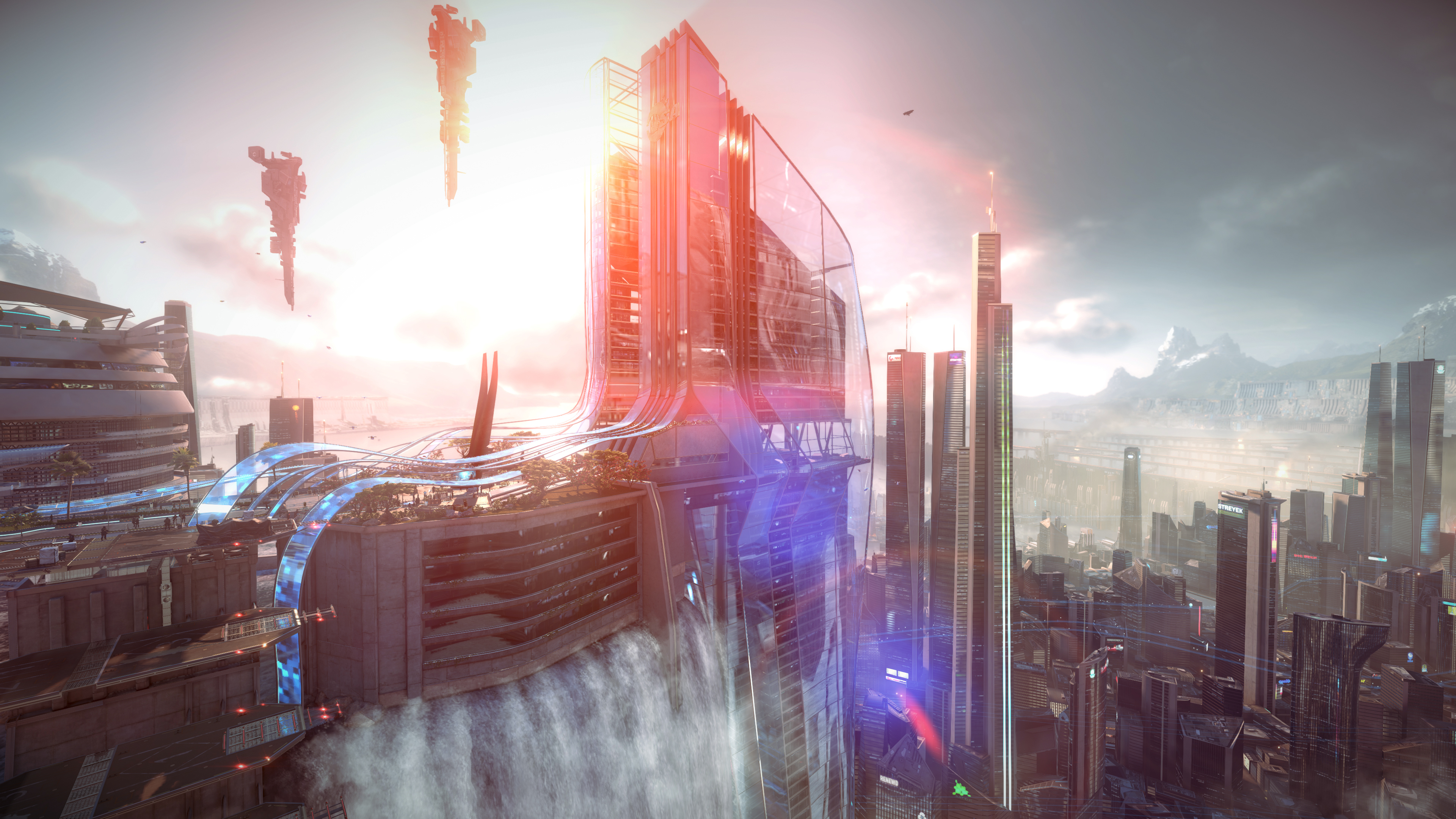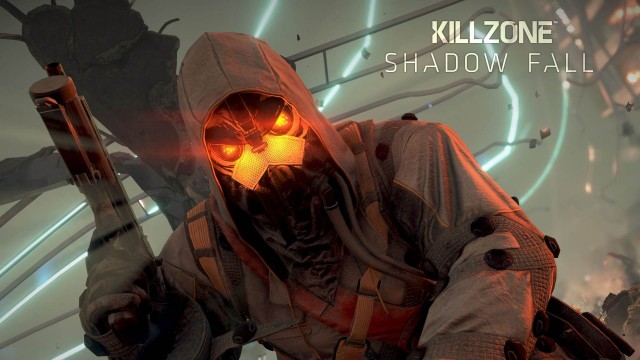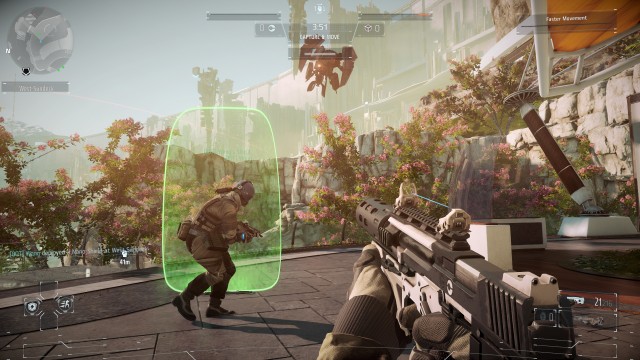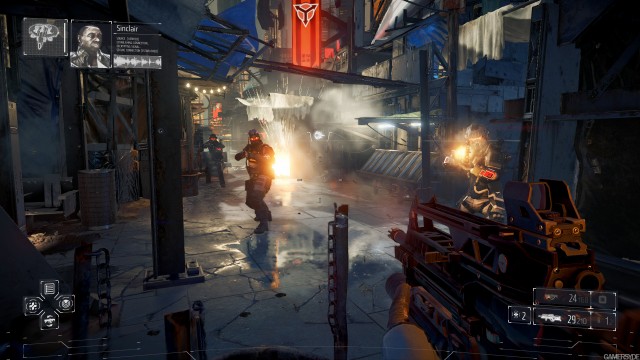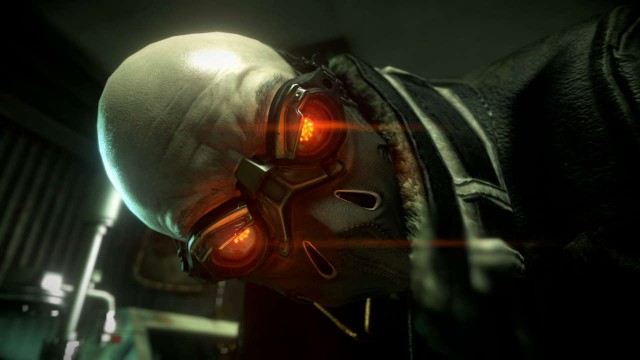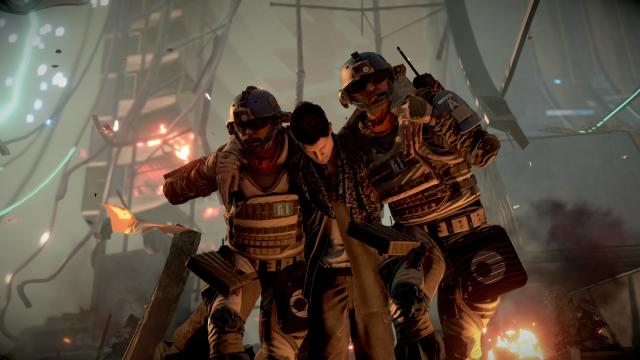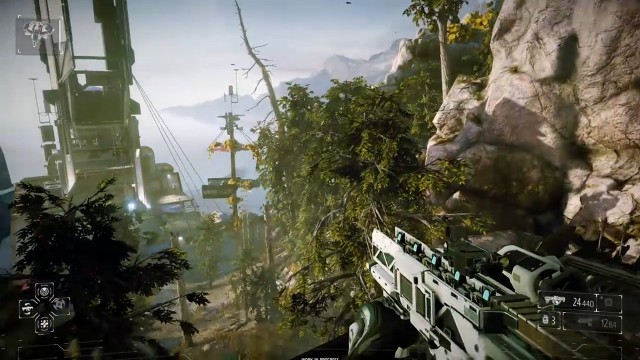2013 finally allowed Killzone to be the champion that Sony always dreamt it would be.
Despite its following of PlayStation gamers, Killzone has been a rather checkered series at best before 2013. The dubious original Killzone on PS2 was a questionably-designed and not-at-all clever attempt to ride the success Microsoft had seen with the Halo games on the Xbox, and it hasn’t held up in the slightest, best evidenced by its horrendous downloadable PS3 port. A slight improvement was made by strategy-based PSP spin-off, Killzone: Liberation, but only slight, and again, nothing that’s aged well at all past 2006.
Killzone 2 was a massive improvement, officially bringing the series to PS3, but it nonetheless left a sour taste in the mouth of fans when it followed an E3 reveal that was full of completely fabricated and upscaled footage not present in the final product. Likewise, Killzone 3 was seen as a half-hearted sell-out effort for PlayStation Move and 3D televisions by much of the PS3 community, with much of the gameplay feeling phoned in and rehashed from Killzone 2.
Then 2013 came, whereupon the series was responsible for finally giving the PS Vita the high-quality first-person shooter it had been begging for since its launch, thanks to Killzone: Mercenary. Only a couple of months later, that would be followed up by one of the PS4’s most anticipated launch titles, Killzone: Shadow Fall, a next-gen sequel that finally aims higher than just recycling the ideas of various Halo and Call of Duty games to come before.
Longtime fans may be caught off-guard by some design tweaks in Killzone: Shadow Fall, so here’s fair warning. Gone are the dreary, grey and dusty environments of the previous games. Gone is the corridor shooting with so much noise and a whole platoon of soldiers fighting alongside you. Now, you’re just one man, a shadow marshal, undertaking a series of covert missions amidst a new cold war provoked by the series’ familiar feuding factions, the human Vektans, and the mutant Helghast.
Killzone: Shadow Fall is certainly not your daddy’s Killzone, and not every experimental revision to the gameplay is a resounding success, granted. Overall however, the game proves a refreshing change of pace for what was otherwise a somewhat derivative series, and comes recommended as a launch exclusive to purchase alongside your new PS4.
If you play through the prior Killzone games in succession and then immediately jump into Killzone: Shadow Fall, the difference is most certainly night and day, and that’s not simply because of the PS4’s sizeable power boost over prior PlayStation devices! Whereas the series was formerly bleak and dull-coloured amidst so much wartime carnage, Killzone: Shadow Fall immediately grabs your attention with bright, colourful and dynamic landscapes that do a great job of showing off what the PS4 can do.
It’s appropriate that the environments be the real star of the game’s campaign, since you’ll spend so much time exploring in contrast to the linear progression of prior Killzone games. Heaps of collectibles lie scattered throughout the campaign’s ten chapters, and it’s a joy to collect them all when you really see how much incredible detail that regular developer, Guerilla Games has put into the mission environments. Whether it’s the rain-slick depths of New Helghan’s slums, or the stunning skyline of Vekta City, you’ll be in awe at just how much of a leap in vibrancy and life Killzone: Shadow Fall’s visuals really are compared to the previous games!
The ten multiplayer maps that Killzone: Shadow Fall has on the disc, inspired by various campaign sections, are also impressive to behold, even though there’s less time to ogle them during multiplayer fragfests, naturally. They obviously don’t have the many small touch-ups and details of the campaign environments, but they’re still much more lifelike and immersive than anything that the series’ online arenas ever delivered on PS3.
The only unfortunate weak link in the graphics comes from the character models, which look disappointingly undefined, and not like anything that the PS3 couldn’t easily render. To make matters worse, they barely animate, speaking listlessly and moving in a stilted fashion, which is especially noticeable during key story scenes. It’s a disappointing blemish in what’s otherwise a remarkably beautiful next-gen launch game.
All in all however, the series shedding its plodding grey visual palette is very welcome, especially when the setting comes to life like never before, thanks to the well-utilized early processing power of the PS4!
The Killzone series had its share of flaws on the PS3, and especially the PS2 and PSP, but it at least consistently impressed in the audio department! Loud, bombastic firefights would continually dominate each Killzone game, even giving shooter juggernauts like Call of Duty and Battlefield a run for their money in terms of mind-blowing, ear-shattering speaker carnage!
Killzone: Shadow Fall however is a much more delicate game, which will likely disappoint more conservative fans. The quieter and more serene, or otherwise haunting environments are not filled with the cries of soldiers and the roar of constant gunfire. Instead, you’ll need to listen for footsteps and chatter as you carry out your espionage tasks. After all, the proper war between the Vektans and Helghast is over. It ended pretty decisively upon the conclusion of Killzone 3.
That’s not to say however that Killzone: Shadow Fall still doesn’t make good use of sound in its own way. Sure, the guns now sound disappointingly weightless compared to even the PS2 original, but the subtle sounds in the environment that keep you on your toes and alert are still quite well-realized. The new techno/synth soundtrack also complements it very nicely, getting your blood boiling when you’re caught in a gunfight, and highlighting key story scenes as you must struggle against powerful odds.
The voice acting is also very well-done, only let down by the lacklustre and stiff character models. Characters speak with loads of emotion and conviction, effectively capturing a new element of drama that the series could never properly realize before, which services the novel premise of the game quite well. The crystal-clear monologues that play from your controller’s mic upon picking up a collectible audiolog are especially outstanding, capturing a variety of emotions across many challenging callbacks to situations never actually experienced on-screen, especially when they answer some chilling questions about the harrowing aftermath of Killzone 3.
Fans will likely long for the more aggressive and triumphant audio displays of the series’ PS3 games in particular, but Killzone: Shadow Fall still offers an effective audio blend in its own rich new flavour.
Killzone: Shadow Fall will largely prove unrecognizable by the series’ hardened veterans, but if you give it a chance, you’ll agree that it’s a cool new spin on a series that was previously happy to aim for the middle from a gameplay standpoint.
Immediately, you’ll get a huge sense of heightened ambition on the part of Guerilla Games when you start a new campaign. A dramatic and tragic intro mission will soon give way to a child growing into an adult shadow marshal, your protagonist, Lucas Kellan. In the next mission, you’ll be undertaking a stealth op, trying to avoid the watchful eyes of Helghast patrols as you undertake a risky extraction of your men, entrenched in Helghast territory on the other side of ‘The Wall’, a massive barrier built to separate the Vektans from the surviving Helghast on Vekta, following the aftermath of the Helghast planet’s destruction at the end of Killzone 3.
The mission variety is fantastic, standing in stark contrast to the confined set pieces of the series’ prior games. You’re given free reign to explore expansive environments, undertaking multiple potential paths in trying to accomplish your objective and hunt for collectibles. You’ll carry out data theft, search-and-rescue, assassinations, diversions, and more as you play through the campaign’s ten chapters, never getting the sense that you’re performing the same tasks on multiple occasions.
As wonderful as the added freedom of Killzone: Shadow Fall’s missions are however, some fans may take issue with it, since it means that they’ll be locked in gunfights far less frequently. Oh yes, the game still does have some standout and large-scale gun battles, particularly towards its finale, but for most of the game, you’ll simply be wandering around environments hunting for various things. It’s still cool in its own way, but it’s a far cry from the fast, satisfying and constant action that the previous games continually delivered.
As mentioned before, not every new gameplay experiment that Killzone: Shadow Fall attempts works all that well either. The new spy focus is great, and the wide open environments definitely work. On the other hand however, there are several sections that force you to fly around, do first-person platforming, and even force you through a few stealth bits that don’t always work as reliably as they should. It’s nice that the game wants to avoid a feeling of stagnation, but it could have done with being a bit more tightly-focused.
Things only get worse when A.I. issues occasionally crop up too. While Helghast soldiers are at least reasonably smart most of the time, attacking in formation, using cover, and exploiting weaknesses in your own strategy, there’s still too many times where they’ll just charge right at you, easily able to be cut down by the assault rifle you’re no doubt carrying. Likewise, whether or not soldiers spot you sometimes feels downright random. There are times where you can sprint just a few feet behind a soldier and he won’t even hear you, and there are other times where you can be cloaked and crawling along in the shadows, yet still be inexplicably spotted.
It’s a shame that the A.I. is problematic, because it often defeats the purpose of using your new OWL companion drone. This is otherwise a very clever use of the PS4 controller’s touch pad, allowing you to swipe your finger across the touch pad in one of four directions to toggle the OWL to stun, attack, shield you, or make a zipline for you to reach a faraway area, pressing L1 to execute the action when you’ve aimed at where you want the OWL to go. It’s a very cool idea, but the game rarely gives you incentive to make use of the OWL even on higher difficulties, beyond a few sections where you’re forced to use a zipline or hack something.
All in all however, the campaign is fun and surprisingly lengthy, clocking in at about ten to twelve hours. That’s not bad at all for a modern first-person shooter with a robust multiplayer suite to enjoy!
Speaking of the multiplayer, it’s also seen some design tweaks, though is ultimately more recognizable when compared to the multiplayer arenas of the series’ PS3 games. EXP and unlockable loadouts have been tossed out, and the class list has been shrunk down simply to Assault, Scout and Support, with the Medic class now being removed and having some of its abilities folded into the Support class. The result is a leaner and more accessible multiplayer suite that doesn’t betray the addictive, hardcore appeal that the series’ multiplayer arenas delivered so well on the PS3.
Instead of grinding EXP and unlocking weapons (just about everything is unlocked from the get-go now), you now undertake a multiplayer metagame in the form of accomplishing challenges. Each of the three classes has unique challenges that emphasize skill over just maintaining a kill/death ratio, which opens up the experience much better to people who prefer not to play online so aggressively. It also eliminates higher rewards for more frequent players, emphasizing skilled play over just sinking hours and hours into online matches, though you can still unlock perks and earn trophies for mastering all three classes and performing well online too.
Also allowing for a more customizable, user-friendly experience are the use of Warzones, a page borrowed from the playbook of Battlefield’s custom play servers no doubt. You can play traditional modes like Team Deathmatch if you wish, but using Warzones, you can seek out or host specialized play matches that allow you to toggle respawns, weapon loadouts and other special features to your heart’s content! This allows you to create the kind of online arena that you want to create, and should lend the online multiplayer of Killzone: Shadow Fall lots of added replay value over most other competing shooters on the PS4.
You’ll likely be revisiting multiplayer more than you will the campaign, which is solid, but ultimately lacks replayability once you’ve uncovered all of the collectibles, amassed every trophy within it, and beaten it on the highest difficulty. The multiplayer on the other hand will keep you coming back, blending forward-thinking customization with tried-and-true action to produce what is easily among the best multiplayer offerings of the PS4 launch lineup.
One thing that Killzone can just never seem to get right across its various games is the storyline. Even the superb Killzone: Mercenary suffered in the plot department, and even the marquee PS3 games were constantly brought down by sloppy writing and poor cutscene direction. This squanders the intriguing premise of the Killzone universe, since most players won’t be able to follow these games’ plots, nor understand the characters or their motivations without hopping on Wikipedia, and even then it’s iffy.
Killzone: Shadow Fall tells a better story than its predecessors on the positive side. On the negative side however, it still doesn’t at all compare to the high-quality storylines you’d see in beloved shooter franchises like Halo, Half-Life or BioShock. You at least get a better sense of drama this time, and Lucas Kellan actually manages to be a semi-likeable, relatable protagonist, which is a first for this series! The premise behind the game is also very cool, and is a very inspired way to continue an otherwise straightforward macho sci-fi shooter canon.
The game takes place about thirty years after the conclusion of Killzone 3, which left the Helghast planet dead and uninhabitable in an event called ‘The Terracide’. The surviving Helghast were relocated to the human planet, Vekta as a condition for their surrender and ending of the war that spanned the prior Killzone games. Given half the planet to settle and colonize as ‘New Helghan’, relocating the human citizens to the Vektan half, a massive barrier called ‘The Wall’ was erected to separate the two resenting factions, resulting in a cold war that leaves tensions approaching a boiling point, threatening to ignite another war over Vekta.
Orphaned as a result of the Helghast relocation, and taken in by the Shadow Marshal academy, Lucas Kellan gets caught in the threat as the youngest-ever Shadow Marshal, an espionage operative tasked with spying on the Helghast and stopping attempts to provoke war before they even start. Needless to say, trouble comes knocking when forces conspire to pit the Vektans and Helghast against one another once again.
It’s still a little difficult to follow the story at times, even if the character work is much improved over prior games. Some progress is better than no progress at all, but it’s still not advised that you expect much from the plot here.
On the note of Killzone 3, its post-credits tease is indeed realized, as Killzone 3’s main villain, Jorhan Stahl, is revealed to have survived both the destruction of his cruiser and the destruction of his planet, operating in secret upon the uninhabitable Helghan to try and destroy the Vektans once again. Of course, this creates a pretty big plot hole, as it really downplays the supposed devastation of The Terracide, since Stahl and a massive platoon of Helghast don’t seem to be bothered by a supposed dead, irradiated planet.
Why exactly did the Helghast have to migrate en masse to Vekta if they could have just lived underground for decades, like Stahl and his goons did? This is never explained and makes the game’s otherwise great premise come apart, making for more frustration in the storyline. Stahl’s ultimate demise is abrupt and disappointing to boot, considering his resilience and impact in Killzone 3. This is also true of the ultimate conclusion to Kellan’s story arc, which feels like a cop-out ending that resolves none of the character’s issues properly and is played for cheap shock value.
Truth be told, one of the game’s best characters is actually a supporting character, a Vektan/Helghast half-breed woman named Echo, who becomes your ally in the later missions, and is revealed to be the illegitimate daughter of current Helghast leader, Hera Visari, daughter of former Helghast leader from the older games, Scolar Visari. You actually play as Echo in the game’s final mission, since Kellan ultimately fails to stop a new war between the Vektans and Helghast, and at the very least, Killzone: Shadow Fall lays a promising foundation for a sequel played from Echo’s perspective in its ending.
Too bad the series is still fumbling way too many opportunities for a truly standout plot though.
Killzone: Shadow Fall is a standout entry for the Killzone series, even with its considerable gameplay overhauls and handful of flaws, and more importantly, it’s a strong launch exclusive to champion alongside the PS4. You’ll come for the ambitious and initially engrossing campaign, but you’ll stay for the addictive chaos and persistent rewards of yet another superb Killzone online arena.
Longtime fans may feel a tad alienated by Killzone: Shadow Fall, since it replaces the bombastic and destructive corridor-shooting action of the former games with a new focus on being tactful, professional and undertaking missions without a host of squadmates, ultimately playing as a spy this time and not a soldier. With that said however, the shooting is still tight, the thrills are still plenty, and the incentives are still present, even if they’re in a bit of a different package.
For newcomers just looking for a great PS4 launch title, Killzone: Shadow Fall presents a very attractive entry point to the franchise, since its gameplay mechanics are overhauled, and it relies on no knowledge of how the series played in its previous games. For the Killzone-hardened that have played every game in the series to date, they’ll need to spend more time getting used to the acquired taste of this latest offering. When they do however, they’ll agree that this is a strong debut for the series on PS4, especially in regards to the still compelling online multiplayer suite.
Again, this is not your daddy’s Killzone, but it’s a damn fine next-gen shooter in its own right!

